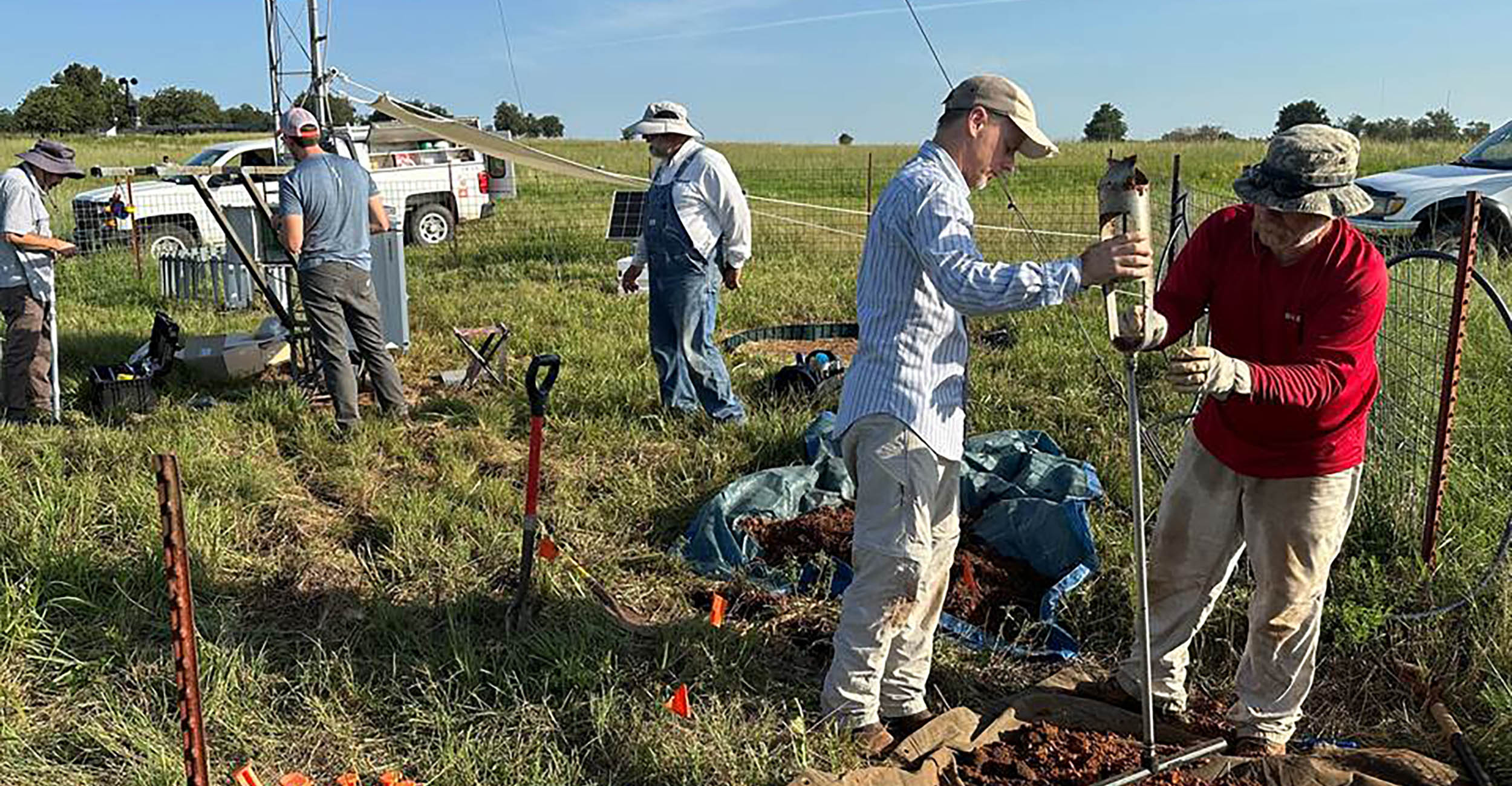
OSU introduces Oklahoma Hydronet to improve water management
Tuesday, December 19, 2023
Media Contact: Alisa Boswell-Gore | Office of Communications & Marketing, OSU Agriculture | 405-744-7115 | alisa.gore@okstate.edu
Oklahoma State University researchers have partnered with other state and federal entities to improve the management of water resources across the state.
“We’re trying to create a world-class water monitoring network for our state to complement what we already have, which is a world-class meteorological network with the Oklahoma Mesonet,” said Tyson Ochsner, professor of plant and soil sciences in the Ferguson College of Agriculture.
Branded the Oklahoma Hydronet, the monitoring system will measure water stored in soil, aquifers and reservoirs. OSU is partnering with the National Oceanic and Atmospheric Administration, the U.S. Department of Agriculture, the Oklahoma Water Resources Center, the Oklahoma Water Resources Board and the University of Oklahoma for the project.
“Drought and flooding are always a problem in Oklahoma,” said Chris Adams, monitoring coordinator with the Oklahoma Water Resources Board. “The Hydronet project is about being prepared for those things, so we can see where those water sources are at and plan accordingly. But it will also help us plan for the future.”
Ochsner said whether it is managing droughts and limited irrigation water or trying to predict floods, the state needs better water system monitoring. He said many reservoirs around the state are not currently monitored for water levels.
“The amount of water stored in shallow aquifers can change quite a bit throughout the season and from year to year. I’ve talked to farmers who have said their crops failed because they ran out of water before their crops reached maturity,” Ochsner said. “They don’t know how much water will be available to their crops because we don’t have that kind of water monitoring system in place across the state.”
Ochsner said the first step will be to expand water level monitoring across the state for reservoirs and aquifers.
“When making streamflow forecasts for an extreme weather event, it makes a big difference whether the reservoirs are full, empty or somewhere in the middle, but we don’t have that information available right now,” Ochsner said. “We have a good program to monitor the aquifers once per year, but that data is not provided in a timely fashion and is not going to help those managing water in season.”
The Hydronet project will install new sensors to monitor water levels and serve as a communications system for collecting and storing daily data and sharing it online. The system will also create maps and figures to help water managers and forecasters apply the data.
The Oklahoma Mesonet has had soil moisture sensors in place since 1996, but more accurate sensors will replace the outdated sensors at all Mesonet sites, and measurement depths will be extended to better represent the plant root zone.
“There will also be a research component because no one has had integrated water monitoring at this scale, so we haven’t developed the science for using this type of integrative monitoring. This data will open powerful ways for us to make better forecasts for flooding or drought,” Ochsner said. “Some communities rely on unmonitored groundwater aquifers or surface water reservoirs for their community water supply, so being better able to monitor and forecast those water resources will be directly relevant to many water users across the state.”
Ochsner said the project has initial funding through the National Oceanic Atmospheric Association, and researchers are seeking additional funding to maintain and grow the Hydronet beyond the initial two-year installation phase. He said U.S. Rep. Frank Lucas and former Sen. Jim Inhofe played a large role in making the Hydronet project possible.
“Leaders understanding the priority and value of water and water management is key. Water is going to continue to be an important topic for the growth and future of our state,” Ochsner said. “We’re going to continue to find ways to develop and support this effort, so it can have a long-term impact on Oklahoma. Hopefully, the state can serve as an example for other regions that want to implement similar systems.”
